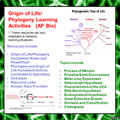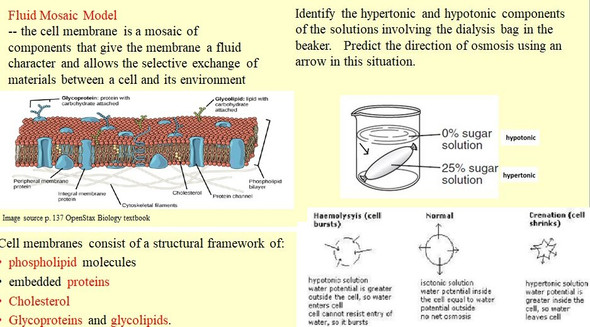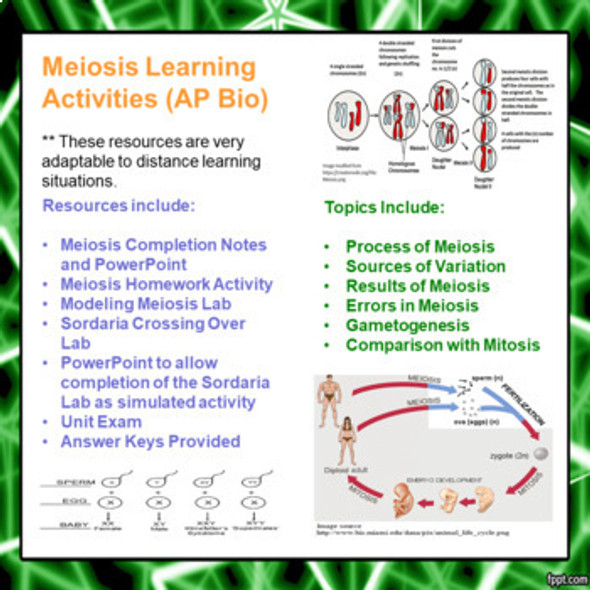Origin of Life/Phylogeny Learning Activities for AP Biology (Distance Learning)
- Bulk Pricing:
- Buy in bulk and save
- Contributor:
- Monday's Rescue
- Grade Level:
- 9-12
- Product Type:
- Learning Package (Notes, PowerPoint, Homework)
- File Type:
- doc, pdf, ppt
- Pages:
- 30
- Answer Key:
- Yes
Description
This zip file contains different activities (30 pages of student handouts and 1 PowerPoint with a total of 72 slides) which can be used to compose a unit for AP Biology or advanced Biology students involving the Topics of the Origin of Life and Introduction to Phylogenetics. Some topics addressed in this unit in reference to the origin of life include a discussion of the early Earth history including the role of the reducing atmosphere, mechanisms for life's origin including the heterotroph hypothesis, the Stanley Miller experiment, RNA world hypothesis, evolution of eukaryotes from prokaryotes, endosymbiont hypothesis and the evolution of life on land. An overview of systems of classification and introduction to the construction of cladograms and phylogenetic trees is also addressed. The relationship of changes in the environment to extinction and biodiversity is also included. More specific information on the learning goals addressed in this learning package may be viewed near the end of this course description.
The Educational Testing Service also provides two labs which fit well with this unit. Links to obtain these labs are included in the "read me first" text file in this zip file package. This read me first file also contains links to an online textbook which can be used in replacement of traditional classroom textbooks.
This lesson packet contains a listing of the learning goals, common core learning standards, NGSS learning standards and the AP Biology performance indicators addressed in these materials. These are included in the packet and at the end of the description of this lesson.
Most documents are included in word and pdf to allow editing for specific teacher needs.
This package of learning materials and the associated learning objectives have been updated to reflect the changes in the 2019-2020 AP Biology curriculum.
Answer keys are included for all listed student work items. Student files have been provided in both editable word and pdf format to allow you to edit the activities to meet the needs of the students in your classroom. These learning materials are well suited for a distance learning situation.
The specific contents of the learning package includes the following items (the page count for these items are actual student handouts as answer key page counts are not included):
-- Learning Goals and Objectives for this unit correlated to the AP Bio ETS, NGSS and Common Core Learning standards (2 pages)
-- Origin of Life and Phylogenetics Completion Notes (17 pages)
-- PowerPoint to accompany the Origin of Life and Phylogenetics Completion Notes (74 slides)
-- Phylogeny and the Origin of Life Reading Worksheet (5 pages) (28 questions)
-- Origin of Life Exam (6 pages) (35 multiple choice and 2 short answer questions)
AP Biology Learning Objectives ETS
Enduring Understandings
EVO-1 Evolution is characterized by a change in the genetic makeup of a population over time and is supported by multiple lines of evidence.
EVO-2 Organisms are linked by lines of descent from common ancestry.
EVO-3 Life continues to evolve within a changing environment.
SYI-3 Naturally occurring diversity among and between components within biological systems affects interactions with the environment.
Learning Objectives
EVO-1.A Describe similarities and/or differences in compartmentalization between prokaryotic and eukaryotic cells.
EVO-1.B Describe the relationship between the functions of endosymbiotic organelles and their free-living ancestral counterparts.-1.O Explain the interaction between the environment and random or preexisting variations in populations.
EVO-2.A Explain how shared, conserved, fundamental processes and features support the concept of common ancestry for all organisms.
EVO-2.C Describe structural and functional evidence on cellular and molecular levels that provides evidence for the common ancestry of all eukaryotes.
EVO-3.A Explain how evolution is an ongoing process in all living organisms.
EVO-3.B Describe the types of evidence that can be used to infer an evolutionary relationship.
EVO-3.C Explain how a phylogenetic tree and/or cladogram can be used to infer evolutionary relatedness.
EVO-3.G Describe factors that lead to the extinction of a population.
EVO-3.H Explain how the risk of extinction is affected by changes in the environment.
EVO-3.I Explain species diversity in an ecosystem as a function of speciation and extinction rates.
EVO-3.J Explain how extinction can make new environments available for adaptive radiation.
SYI-3.D Explain how the genetic diversity of a species or population affects its ability to withstand environmental pressures.
SYI-3.E Describe the scientific evidence that provides support for models of the origin of life on Earth.
Origin of Life and Phylogenetic Learning Goals
Upon the completion of this unit the student will be able to:
1. state several hypotheses for the evolution of life on our planet.
2. describe the conditions of the early earth including its reducing atmosphere.
3. describe the contribution that Miller and Urey made towards developing a model for abiotic synthesis of organic molecules.
4. provide plausible evidence to support the hypothesis that chemical evolution resulting in life's origin occurred in four stages: abiotic synthesis of organic monomers, abiotic synthesis of polymers, formation of protobionts, origin of genetic information (RNA world hypothesis).
5. state the endosymbiont hypothesis and list evidence supporting this.
6. discuss the origin of aerobic respiration, multicellularity and land based life.
7. explain why the domain system is a better description of the probable evolution of life than the five-kingdom system of classification.
8. use cladistic analysis to determine branches on phylogenetic trees.
9. explain why phylogenetic tree describes the evolutionary relationships among species better than a cladogram.
10. relate biodiversity to extinction and speciation.
NGSS Learning Standards
HS-LS4-1. Communicate scientific information that common ancestry and biological evolution are supported by multiple lines of empirical evidence.
HS-ESS2-7. Construct an argument based on evidence about the simultaneous coevolution of Earth’s systems and life on Earth.
Common Core State Standards Connections:
ELA/Literacy
RST.11-12.1 Cite specific textual evidence to support analysis of science and technical texts, attending to important distinctions the author makes and to any gaps or inconsistencies in the account.
WHST.9-12.1 Write arguments focused on discipline-specific content.
WHST.9-12.2 Write informative/explanatory texts, including the narration of historical events, scientific procedures/ experiments, or technical processes.
WHST.9-12.9 Draw evidence from informational texts to support analysis, reflection, and research.
Mathematics
MP.2 Reason abstractly and quantitatively.
Terms of Use
Purchase of the product is for classroom use by the purchaser only. It is a violation for individuals, schools, and districts to redistribute, sell, or post this item on the Internet or to other individuals.
This work is licensed under a Creative Commons Attribution-NonCommercial-ShareAlike 4.0 International License.
This learning package bundle is part of the AP Biology Complete Course. The complete course contains 22 learning package bundles in addition to this one. Save nearly 60% over the cost of buying 23 individual unit learning bundles with your purchase of the complete course.
Check out Monday's Rescue for more great resources!














